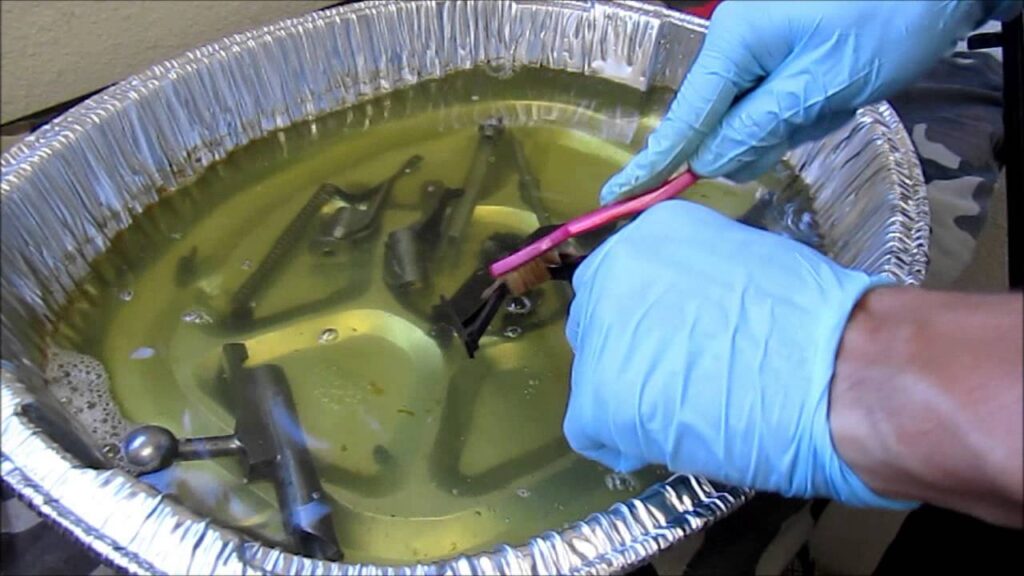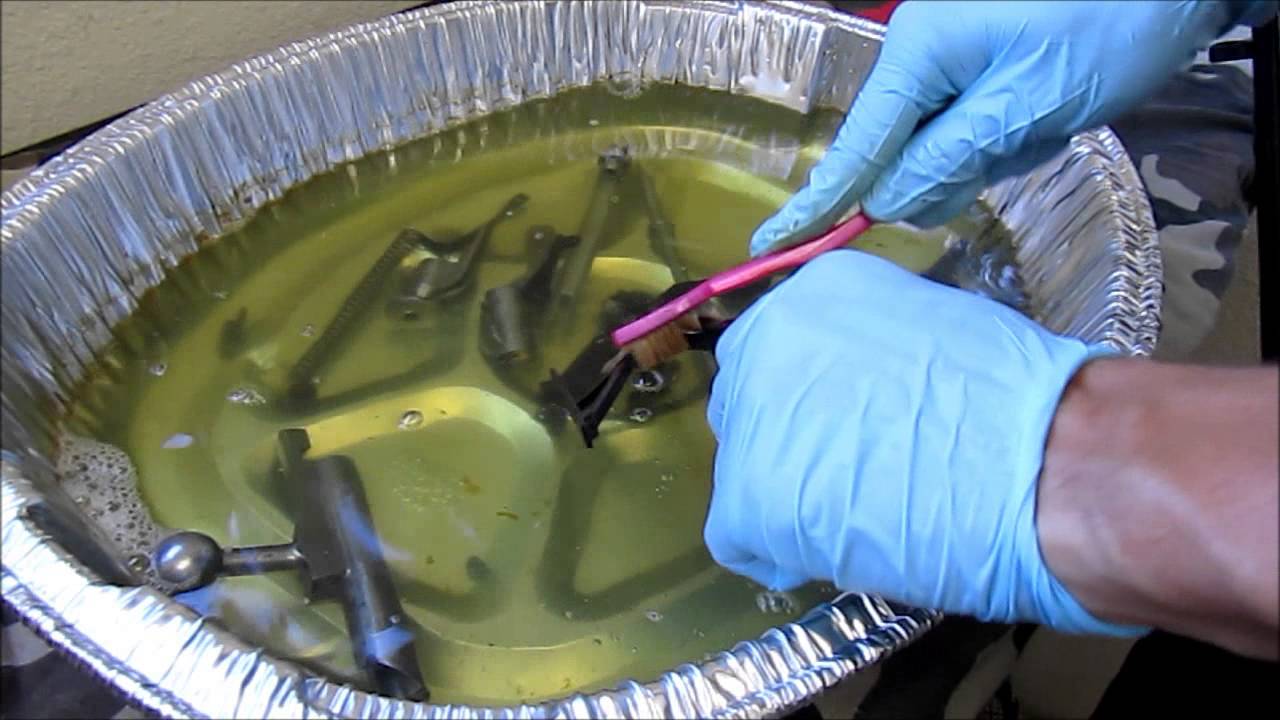
The Best Thing to Use to Clean Cosmoline: A Comprehensive Guide
Cosmoline, a wax-like petroleum-based rust preventative, has been the bane and boon of firearm enthusiasts and collectors for decades. While it effectively protects metal parts from corrosion during storage and transport, removing it can be a sticky, messy, and frustrating endeavor. This article provides a comprehensive guide to understanding cosmoline and, more importantly, identifying the best thing to use to clean cosmoline effectively and safely.
Understanding Cosmoline: Why Is It So Stubborn?
Cosmoline is not a single product but rather a family of similar compounds. Its primary purpose is long-term preservation, and its thick, viscous nature allows it to adhere stubbornly to metal surfaces. This tenacity is precisely what makes it effective as a rust preventative but also what makes it so challenging to remove. Different formulations exist, some more easily dissolved than others, adding to the complexity of the cleaning process. Understanding the composition and properties of cosmoline is the first step in selecting the best thing to use to clean cosmoline.
Factors to Consider When Choosing a Cosmoline Remover
Several factors influence the choice of the best thing to use to clean cosmoline. These include:
- Material Compatibility: The cleaning agent should not damage the underlying metal, wood, or plastic components.
- Effectiveness: It must effectively dissolve and remove the cosmoline without leaving a residue.
- Safety: The cleaning agent should be safe to use, with minimal health risks and environmental impact. Proper ventilation and protective gear are essential.
- Ease of Use: The application method should be straightforward and not require specialized equipment.
- Cost: The cost of the cleaning agent should be reasonable, considering the amount required for the cleaning task.
The Contenders: Evaluating Different Cosmoline Removal Methods
Several methods and products are commonly used for cosmoline removal. Let’s evaluate some of the most popular options to determine the best thing to use to clean cosmoline:
Mineral Spirits (Paint Thinner)
Mineral spirits are a petroleum-based solvent that effectively dissolves cosmoline. They are relatively inexpensive and readily available at most hardware stores. However, mineral spirits can be harsh on some materials and require good ventilation due to their fumes. Ensure adequate ventilation when using mineral spirits. It is a strong contender for the best thing to use to clean cosmoline especially for large parts.
Kerosene
Similar to mineral spirits, kerosene is another petroleum-based solvent that can dissolve cosmoline. It is often used as a fuel and cleaner and is generally less aggressive than mineral spirits. However, it still requires good ventilation and may not be suitable for all materials. Some find kerosene effective and a good option for the best thing to use to clean cosmoline.
Brake Cleaner
Brake cleaner is a strong solvent designed to remove grease and grime from brake components. It is highly effective at dissolving cosmoline but can also be harsh on some plastics and finishes. Use brake cleaner with caution and test it on an inconspicuous area first. While effective, it might not be the best thing to use to clean cosmoline for all situations.
Oven Cleaner
Oven cleaner, particularly the lye-based variety, can dissolve cosmoline. However, it is highly corrosive and can damage many materials, including metal. Oven cleaner is generally not recommended for cosmoline removal due to its potential for damage. It’s definitely not the best thing to use to clean cosmoline in most cases.
Boiling Water
Boiling water can melt and loosen cosmoline, making it easier to wipe away. This method is relatively safe and environmentally friendly, but it may not be effective for thick or stubborn deposits. It also requires careful handling to avoid burns. While not the strongest, it can be considered the best thing to use to clean cosmoline when safety and material preservation are paramount.
Heat Gun/Hair Dryer
Applying heat with a heat gun or hair dryer can soften cosmoline, making it easier to wipe away. This method is relatively safe for most materials but can be time-consuming and may not be effective for thick deposits. Be careful not to overheat the metal, as this could damage the finish. Used in conjunction with other methods, heat can make any product the best thing to use to clean cosmoline.
Commercial Cosmoline Removers
Several commercial products are specifically designed for cosmoline removal. These products often contain a blend of solvents and detergents that effectively dissolve cosmoline without damaging the underlying materials. They are generally more expensive than other options but can be worth the investment for valuable firearms or sensitive components. Many consider these purpose-built cleaners the best thing to use to clean cosmoline for their specific needs.
The Winner: What is the Best Thing to Use to Clean Cosmoline?
Determining the absolute best thing to use to clean cosmoline depends on the specific situation. However, considering effectiveness, safety, and material compatibility, a combination of methods often yields the best results.
For Large, Robust Metal Parts: Mineral spirits or kerosene are cost-effective and efficient. Ensure proper ventilation and wear appropriate protective gear.
For Delicate or Finished Parts: Commercial cosmoline removers are a safer option. Test the product on an inconspicuous area first to ensure compatibility.
For Light Cosmoline Deposits: Boiling water or a heat gun can be effective and environmentally friendly.
Ultimately, the best thing to use to clean cosmoline is the method that effectively removes the cosmoline without damaging the underlying materials or posing a safety risk. Experiment with different methods and find what works best for you.
Step-by-Step Guide to Cleaning Cosmoline
Regardless of the method you choose, follow these steps for effective cosmoline removal:
- Disassemble the Firearm: Carefully disassemble the firearm according to the manufacturer’s instructions.
- Prepare Your Workspace: Set up a clean, well-ventilated workspace. Cover surfaces with protective sheeting to prevent spills.
- Apply the Cleaning Agent: Apply the chosen cleaning agent to the cosmoline-covered parts. Allow it to soak for the recommended time.
- Scrub and Wipe: Use a brush or cloth to scrub away the loosened cosmoline. Wipe the parts clean with a lint-free cloth.
- Repeat as Necessary: Repeat steps 3 and 4 until all cosmoline is removed.
- Lubricate: After cleaning, lubricate the firearm according to the manufacturer’s instructions.
- Reassemble: Carefully reassemble the firearm.
Safety Precautions
When working with solvents and chemicals, always follow these safety precautions:
- Wear Protective Gear: Wear gloves, eye protection, and a respirator to protect yourself from harmful fumes and chemicals.
- Ventilate: Work in a well-ventilated area to avoid inhaling fumes.
- Dispose of Waste Properly: Dispose of used solvents and cleaning materials according to local regulations.
- Read the Labels: Carefully read and follow the instructions on all product labels.
Conclusion: Mastering the Art of Cosmoline Removal
Cosmoline removal can be a challenging but rewarding task. By understanding the properties of cosmoline and carefully selecting the best thing to use to clean cosmoline, you can effectively remove this rust preventative and restore your firearms to their original condition. Remember to prioritize safety and material compatibility, and don’t be afraid to experiment with different methods to find what works best for you. With patience and the right approach, you can master the art of cosmoline removal and enjoy your firearms for years to come. Finding the best thing to use to clean cosmoline is a journey, not a destination, so be ready to adapt!
[See also: Firearm Maintenance Tips]
[See also: Best Gun Cleaning Solvents]

